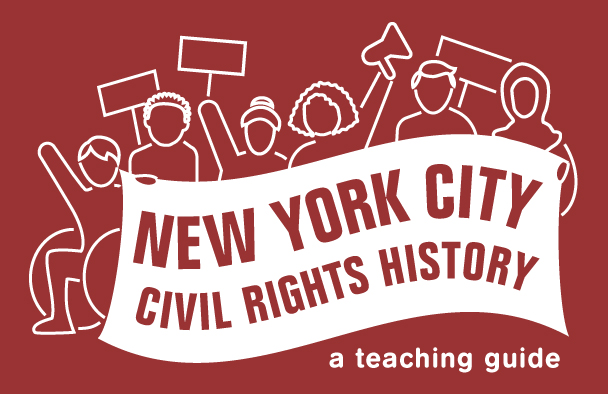- Segregation and inequality are not natural phenomena. They are the result of human actions and choices.
School segregation by race and ability in New York City results from a wide range of policy decisions including, but not limited to, school zoning, construction, architecture, admissions, disability labeling, testing, transportation, and curriculum content.1 Legacies of historic racism, including housing segregation and wealth inequality, shape present-day segregation as well.2
In the late 1800s, Black New Yorkers lived in many areas of the city and often in close proximity to white residents. Disabled young people primarily lived with their families throughout the city. Over the first half of the 1900s, public policy and housing markets made American cities including NYC more and more racially segregated in terms of where people lived. Residential zoning, subsidized suburban development and home finance, public housing construction, and highway construction, as well as segregating real estate market practices and individual racism, made residential areas very segregated by race.3 Disabled people who lived with their families at home experienced this landscape of racial segregation. Yet, during this time, more and more Disabled people lived in the growing network of state institutions, effectively segregated from non-disabled people.4 Segregation in many forms was increasing during these years.
By 1900, New York schools no longer labeled schools as for Black students or white students only, but the Board of Education made zoning, construction, and other decisions that ensured that some schools would have mostly or only white students and some schools would have mostly or only Black (and, once they began to arrive in New York in larger numbers in the 1940s) Puerto Rican students.5
Simultaneously, the Board of Education was creating new classes and schools for Disabled children or children they identified as disabled. They created new disability categories like “social maladjustment,” with their own classes and, in some cases, separate schools. Educators and the courts placed Black and Puerto Rican boys in this category more frequently than they did white boys.6 Other children with intellectual disabilities were excluded from schools entirely, and students with physical disabilities often faced architectural barriers preventing them from attending their local neighborhood schools with their friends and neighbors.
Thousands of large and small decisions by educators, teachers, judges, and others shaped New York’s segregated school system. These decisions included where the city chose to build schools, draw school zone and district lines, assign students to schools, assign teachers to schools, admit or reject students based on ability or disability categories, and fund schools and specialized programs. When people speak about segregation as “just the way it is” they are choosing not to recognize this history of policies and choices that created unequal spaces in NYC schools according to race and disability.
-
Christopher Bonastia, The Battle Nearer to Home: The Persistence of School Segregation in New York City (Palo Alto: Stanford University Press, 2022). ↩︎
-
Richard Rothstein, The Color of Law: A Forgotten History of How Our Government Segregated America (New York: Liveright Publishing, 2017). ↩︎
-
Kevin McGruder, Race and Real Estate: Conflict and Cooperation in Harlem, 1890-1920 (New York: Columbia University Press, 2015); Shannon King, Whose Harlem Is This, Anyway? (New York: New York University Press, 2015); Rothstein, The Color of Law. ↩︎
-
Kim E. Nielsen, A Disability History of the United States (Boston: Beacon Press, 2012). ↩︎
-
Kimberly Johnson, “Wadleigh High School: The Price of Segregation,” in Educating Harlem: A Century of Schooling and Resistance in a Black Community, ed. Ansley T. Erickson and Ernest Morrell (New York: Columbia University Press, 2019), 77-100; Bonastia, The Battle Nearer to Home. ↩︎
-
Francine Almash, “New York City ‘600’ Schools and the Legacy of Segregation in Special Education,” The Gotham Center for New York City History, June 21, 2022, https://www.gothamcenter.org/blog/new-york-city-600-schools-and-the-legacy-of-segregation-in-special-education; Keith A. Mayes, The Unteachables: Disability Rights and the Invention of Black Special Education (Minneapolis: University of Minnesota Press, 2023). ↩︎
